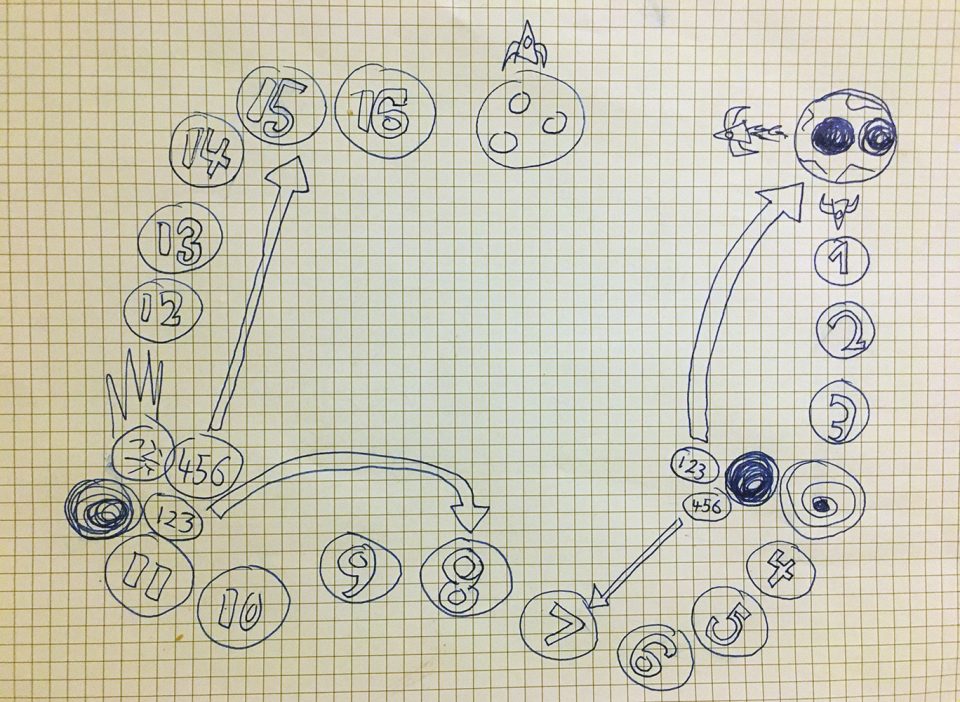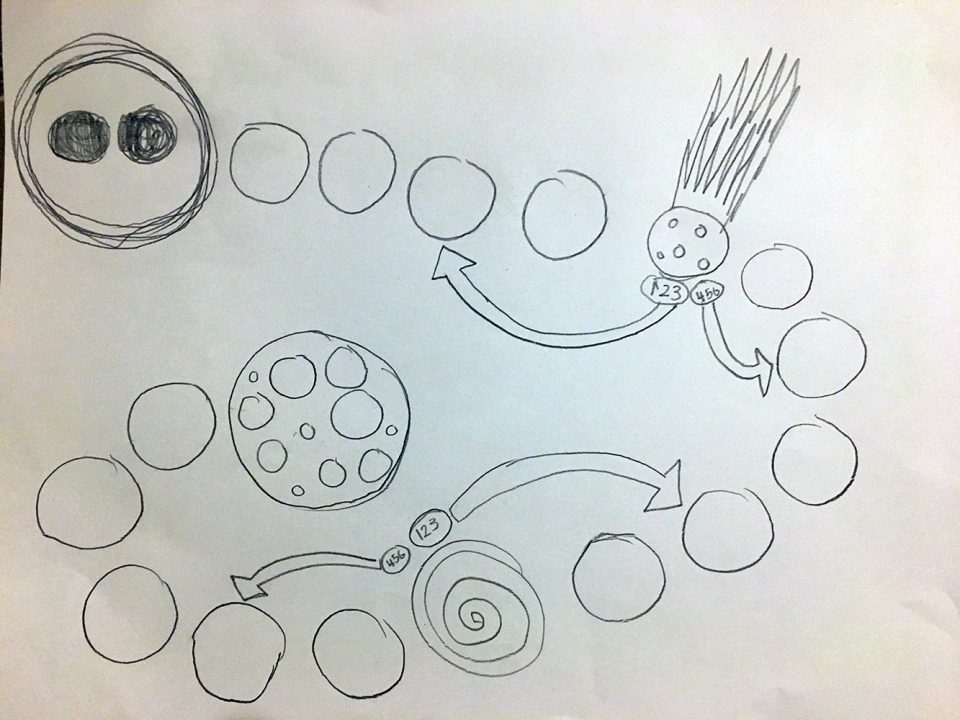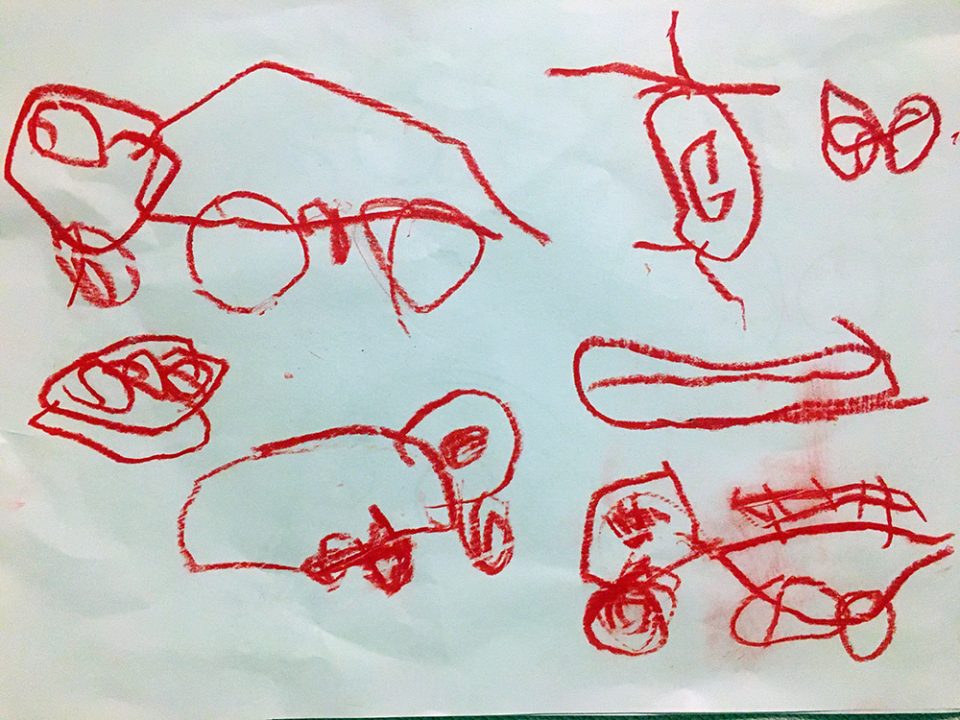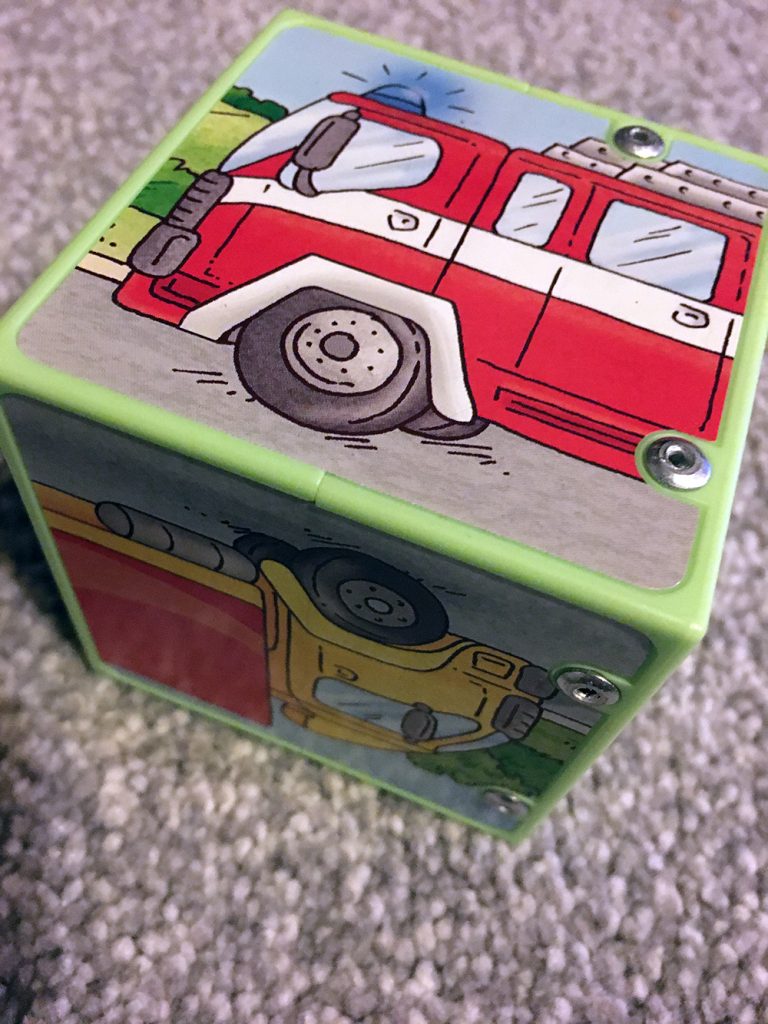Every year, our first-year students develop a board game for one of their design projects. I love looking at the responses to the brief because the assignment gives scope to show systemic as well as detail thinking. The students’ board game proposals curate an elaborate ensemble of the game track, action cards and playing pieces around a theme of their choice. Some even go as far as offering packaging and branding for the game. Others design playing pieces with so much love to detail that brings the whole game to life.
The best games come about when they are designed in collaboration with others, and when they are refined through continuous testing and play. Like many design activities, this seems to come naturally to children. And I have seen our students involving their children in the design of their games, which is a good ‘trick in the box’.
I have two children. Last week I observed an episode between my 8-year-old girl and 3-year-old boy, which showed the power of collaborative design through play to me. My 7-year-old designed a simple space-themed board game. Playing pieces raced each other from earth to moon (I don’t think she had ever heard of the space race between USA and USSR, but this was what it reminded me of.) She borrowed the dice from another game, and some Lego pieces served as ‘space shuttles’. It was a simple race track game and would be won by pure luck not a strategy (below). We played it several times, and she iterated the track layout when she got bored with it.
Suddenly, her little brother came with a piece of paper with shapes drawn on it. He declared this is my game and we need to play it now. Along he brought a dice with vehicles on its faces and two Lego men. So, we were told the abstract shapes were vehicles (below). He told us which shape was which vehicle for some, for others we found out while we were playing. We had to add one shape because the dice came up with a vehicle that was not represented yet. Not a problem, there was space on the piece of paper. We threw a few rounds and moved the Lego pieces onto the shapes whenever the dice landed on the vehicle. But there was no rule when to stop the game. My daughter then suddenly came up with a rule: The winner has to have been on each vehicle at least once. Great! I had won.
For me, there are two simple observations in this. You can start with any simple game idea, you don’t even need to have a complete set of rules yet. When you are trying to play the game, the rules will evolve out of necessity. With each play, you can iterate the track design, the rules or pieces you play with. The second observation is that if you are stuck in your design process, rally your friends and family. Children, in particular, will open your eyes to unexpected new ways of seeing what is in front of you.
Observing children’s play is a goldmine if you want to understand humans’ innate design capacity. With that, I am not alone on this blog, as Theo has previously shared his observations of this child’s design of a shoe. If you want to become a designer it is best to preserve your inner child or start a family!





Leave a Reply